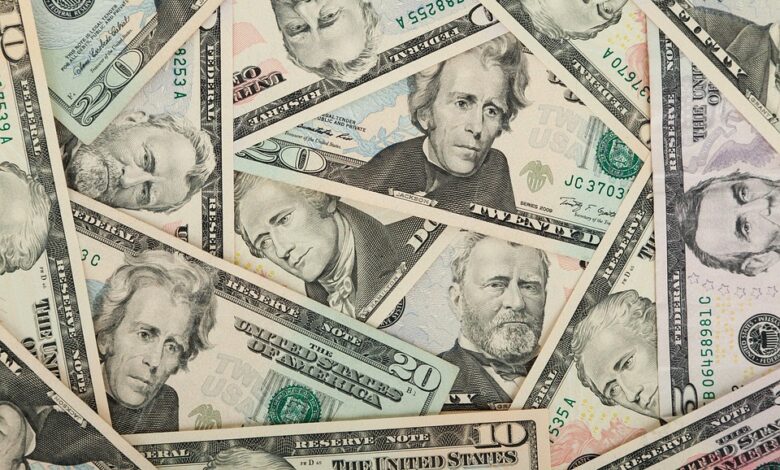Central Banks: Guardians of Economic Stability and Money

The complex, enormous machine of a national economy requires a dedicated, powerful, and highly specialized institution to maintain its stability, manage its currency, and regulate its critical financial infrastructure. This essential role is universally performed by the Central Bank, an independent authority that stands at the apex of the nation’s entire monetary and banking system.
Unlike commercial banks, which focus on profit and serving individual customers, the central bank’s singular, non-commercial mandate is to promote macroeconomic stability and maximize the long-term economic well-being of the entire nation.
This paramount responsibility involves the intricate management of the money supply, the control of inflation, and the continuous oversight of the financial system to prevent catastrophic crises. The decisions made within the high halls of the central bank, often concerning subtle adjustments to interest rates or reserve requirements, ripple through every household, business, and financial market globally.
Monetary Policy is the powerful set of tools the central bank employs to execute this critical mission. Understanding this institution is paramount, as its actions are the definitive, authoritative force shaping the cost of borrowing, the rate of inflation, and the very health of the national economy.
The Core Functions of a Central Bank
A modern Central Bank performs a suite of unique, non-delegable functions that are vital for the proper operation of any advanced economy. These responsibilities establish the bank as the ultimate authority over money and credit. They ensure the financial system is both stable and liquid.
The central bank acts as the monetary authority for the nation. This involves regulating the money supply to achieve specific policy objectives, such as price stability and maximum employment. Its decisions directly influence the level of economic activity. This control over currency is its defining power.
It serves as the banker to the government. The central bank handles the government’s banking transactions, manages the national debt, and often issues new government securities. It provides short-term financing to the treasury when necessary. This relationship is critical for funding public services and infrastructure.
The central bank is the banker to commercial banks. It holds the reserves of commercial banks. It also processes interbank payments and provides the final settlement mechanism for transactions. This role places it at the center of the entire payment system.
Crucially, it acts as the lender of last resort. During periods of financial crisis or panic, the central bank provides emergency liquidity to solvent banks facing temporary cash shortages. This function prevents individual bank failures from spiraling into a devastating systemic collapse.
Finally, the central bank maintains responsibility for overseeing the entire financial system’s stability. It monitors risk within the banking sector. It also establishes regulations and capital requirements to ensure commercial banks remain sound and robust. This oversight mitigates systemic risk.
The Ultimate Goal: Macroeconomic Stability
The primary, overarching objective guiding all central bank actions is the achievement of stable, sustainable macroeconomic conditions. This stability is typically defined by a balanced pursuit of two key, often competing, mandates. This dual goal is central to contemporary economic governance.
A. Price Stability (Controlling Inflation)
Price Stability means maintaining a low and predictable rate of inflation. Most central banks target an annual inflation rate of around 2%. High, volatile inflation erodes the purchasing power of money, discourages long-term investment, and creates economic uncertainty. Uncontrolled inflation is a major threat to economic confidence. The central bank must actively manage the money supply to keep price increases anchored to this low target.
B. Maximum Sustainable Employment
The second critical mandate is achieving the highest level of sustainable employment possible without triggering excessive inflation. This goal focuses on maximizing the productive use of the nation’s labor resources. When unemployment is too high, the economy is underperforming and wasting valuable human capital. The central bank attempts to manage interest rates to encourage borrowing and investment, which in turn fuels job creation.
C. The Trade-Off: The Dual Mandate
Central banks constantly face the trade-off between these two goals. Pushing too aggressively to reduce unemployment risks overheating the economy, which causes inflation. Conversely, fighting inflation too fiercely can slow economic activity too much, causing job losses. The central bank must continually adjust its policy stance to maintain a delicate balance between price stability and employment. This balancing act requires exceptional foresight and judgment.
The Mechanisms of Monetary Policy
Monetary Policy is the specific set of tools the central bank uses to influence the availability of credit and the level of interest rates in the economy. The execution of this policy is primarily done through controlling the money supply within the banking system. These tools are powerful and highly effective.
D. Open Market Operations (OMO)
Open Market Operations (OMO) are the most frequently used and precise monetary tool. This involves the central bank buying or selling government securities in the open market. When the central bank buys securities, it injects cash directly into the banking system, increasing the money supply. This typically pushes interest rates down. Conversely, when it sellssecurities, it drains cash from the system, reducing the money supply. OMO is used daily to maintain the target interest rate.
E. Adjusting the Policy Rate (Discount Rate)
The Policy Rate, or discount rate, is the interest rate at which commercial banks can borrow money directly from the central bank on a short-term, emergency basis. Lowering this rate encourages banks to borrow more, which increases the money supply and signals an accommodative stance. Raising the rate discourages borrowing and signals a tightening of policy. Changes in this rate influence all other interest rates in the economy.
F. Reserve Requirements
Reserve Requirements are the minimum fraction of customer deposits that commercial banks are legally required to hold in reserve, rather than lend out. Lowering the reserve requirement frees up more capital for banks to lend, thus increasing the money multiplier effect and the overall money supply. Raising the reserve requirement restricts lending and acts as a potent, though rarely used, tool for tightening policy. This tool has a dramatic and immediate impact on bank liquidity.
G. Interest on Reserves
The central bank may also pay interest on reserve balances held by commercial banks. By raising the interest rate paid on reserves, the central bank incentivizes banks to hold more cash at the central bank rather than lending it out. This acts as a floor for the interbank lending rate. This relatively new tool provides fine-tuning control over the money supply.
The Process of Policy Implementation

The implementation of Monetary Policy is a complex, multi-stage process where the central bank’s actions translate into changes felt throughout the entire economy. The effects are often felt indirectly through a chain of financial decisions. This process is known as the transmission mechanism.
The central bank’s primary action—such as buying bonds via OMO—first affects the short-term interbank lending rate. This is the rate at which commercial banks lend reserves to each other overnight. The central bank targets and maintains a specific rate for these overnight loans.
Changes in this interbank rate immediately influence all other market interest rates. Mortgage rates, corporate bond yields, and consumer loan rates adjust rapidly in response. This adjustment changes the cost of borrowing for businesses and households.
When borrowing costs fall, businesses are encouraged to invest in new equipment and hire more workers. Consumers are encouraged to purchase durable goods like homes and cars. This increased spending stimulates aggregate demand and economic growth. The reverse happens when rates rise.
Finally, changes in interest rates can influence the exchange rate of the national currency. Higher rates often attract foreign investment, increasing the demand for the currency and making it stronger. This affects the competitiveness of the nation’s exports. The entire economy is impacted by this chain reaction.
Central Bank Independence and Accountability
The independence of the central bank is considered a critical requirement for effective Monetary Policy. Independence protects the institution from short-term political pressures, which can often conflict with long-term economic stability goals. A politically dependent central bank risks using money creation to fund unsustainable government spending. This leads inevitably to high inflation and economic crisis.
Independence allows the central bank to make difficult, necessary decisions that may be unpopular politically, such as raising interest rates during an economic boom to preempt future inflation. This ability to withstand political pressure is paramount to maintaining price stability. The independence is typically guaranteed by statute.
However, independence must be balanced with accountability. Central banks are generally required to report regularly to the legislature. They must explain their policy decisions, disclose their economic forecasts, and justify their actions transparently. This transparency ensures public trust and legitimacy. The required reporting structure provides the necessary checks and balances against unchecked power.
Unconventional Monetary Policy
![]()
Following major financial crises, central banks exhausted traditional policy tools when interest rates hit zero. This prompted the development and implementation of Unconventional Monetary Policy (UMP) tools. These tools were necessary to provide further stimulus to the stagnant economies.
H. Quantitative Easing (QE)
Quantitative Easing (QE) involves the central bank purchasing large quantities of long-term government bonds and other securities from the open market. The goal is to inject liquidity directly into the financial system and suppress long-term interest rates. QE differs from OMO because it targets the quantity of money injected, not just the short-term rate. This lowers long-term borrowing costs for businesses and consumers.
I. Negative Interest Rates
Some central banks experimented with negative interest rates. This policy charges commercial banks a fee for holding reserves at the central bank. The intent is to strongly incentivize banks to lend out their money rather than hoarding cash. This is an extreme measure designed to force money into the economy.
J. Forward Guidance
Forward Guidance is a communication tool where the central bank publicly commits to a specific future policy stance. The central bank might promise to keep interest rates low until a certain economic condition is met. This commitment manages market expectations and provides transparency regarding future actions. It influences market behavior without an immediate change in policy.
Conclusion
The Central Bank is the essential, authoritative guardian of the nation’s entire financial and monetary system.
Monetary Policy is the powerful set of tools used to achieve the dual, crucial goals of price stability and maximum sustainable employment.
Open Market Operations, the most frequent tool, involves buying and selling securities to meticulously manage the short-term interbank lending rate.
Changes in this target rate influence all other market interest rates through the chain of the transmission mechanism.
Central bank independence is vital to protect long-term economic stability from disruptive, short-term political pressures.
This independence must be balanced by strict accountability through regular, transparent reporting to the legislature and the public.
Unconventional tools like Quantitative Easing were deployed to inject necessary liquidity when traditional interest rates hit the zero bound.
The entire complex process is dedicated to ensuring predictable inflation, encouraging investment, and maximizing the productive employment of resources.
The central bank’s judicious decisions define the cost of money and profoundly shape the overall health of the national economy.
Its role as the lender of last resort is critical for preventing individual bank failures from cascading into massive systemic financial crises.
The strategic management of the money supply provides the necessary stability for sustained, long-term economic prosperity and growth.
The Central Bank stands as the ultimate, essential institutional pillar supporting modern economic governance and order.



